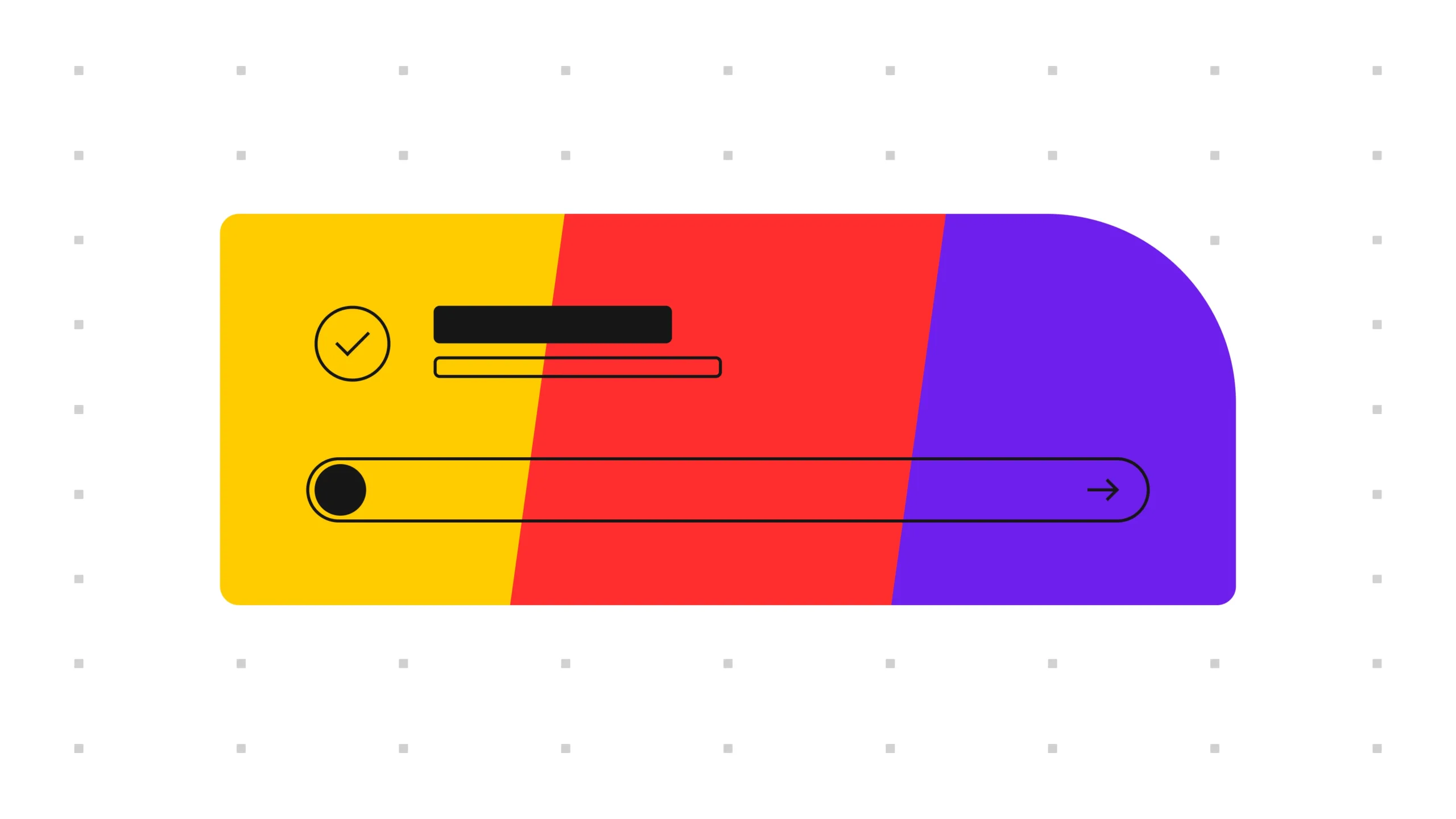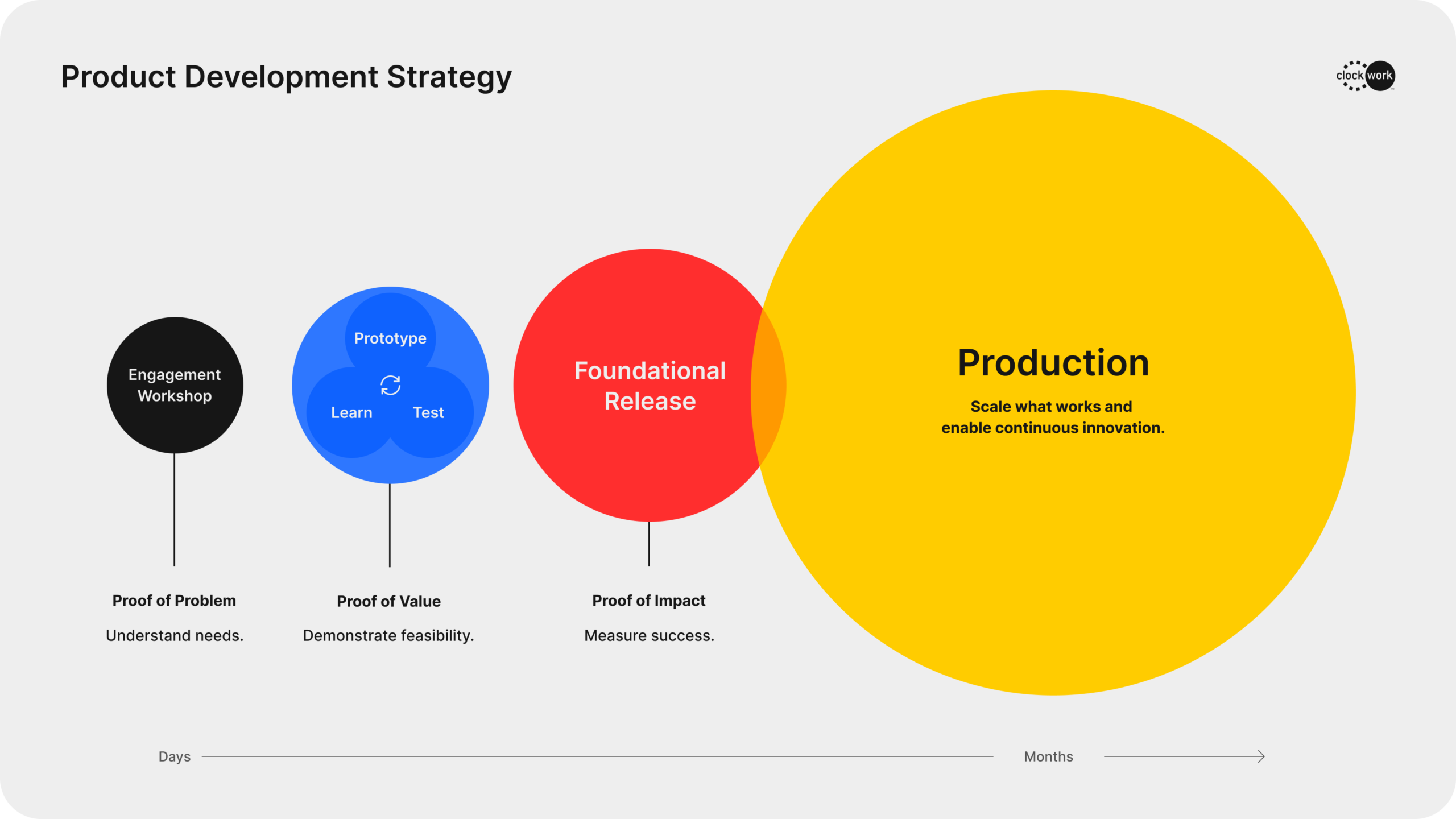Something fundamental has shifted in how successful companies approach technology and product modernization. The old model of massive, risky overhauls has given way to strategic, incremental improvements that deliver value quickly while building toward bigger goals. This isn’t just about keeping up with technology trends; it’s about creating the flexible foundation your organization needs to thrive in an increasingly dynamic business environment.
The AI implementation foundation: why data modernization comes first
The most successful AI implementations we see have one thing in common: they’re built on modern data foundations. This means more than just having data, it means having data that’s clean, consistent, and accessible.
Legacy systems typically store information in ways that made sense years ago but don’t serve today’s needs. Customer information might be split across multiple databases. Product data could be trapped in formats that modern AI tools can’t read. Historical information might exist only in archived systems that new tools can’t access.
Modernizing your tech stack isn’t just about updating your product’s user interface. It’s about creating the data infrastructure that makes AI adoption possible.
“Companies are realizing that modernization isn’t optional anymore; it’s the prerequisite for every other innovation they want to pursue.” — Jay Haase, Director of Software Engineering
Strategic product modernization: from risky overhauls to smart wins
Digital modernization in 2025 looks nothing like the massive overhauls companies attempted a decade ago. Today’s approach is more surgical, more strategic, and more focused on real outcomes.
The new economics of digital transformation
The economic climate has changed everything. Leaner teams and tighter budgets mean every improvement needs to prove its worth quickly. Companies can’t afford year-long projects with uncertain payoffs. They need wins in quarters, not years.
At the same time, user expectations have shifted permanently. B2B users don’t care that your product serves businesses instead of consumers. They want the same intuitive, self-service experience they get everywhere else. When your product requires training sessions and user manuals for basic tasks, it feels broken to them.
Future-proofing through innovation-ready architecture
Future-proofing for emerging technology has become essential. Companies that modernize thoughtfully create platforms that can adapt to new tools and capabilities as they emerge. Those who don’t find themselves constantly playing catch-up, unable to take advantage of innovations that could give them a competitive edge.
The AI revolution has made this especially clear. Companies with modern, flexible tech stacks can experiment with new AI capabilities and integrate them quickly. Those with legacy systems are stuck watching competitors pull ahead while they struggle with basic implementation challenges.
“Modernization isn’t about rebuilding everything. It’s about being intentional: knowing what to keep, what to update, and what to reimagine.” — Jay Haase, Director of Software Engineering
Building internal momentum: The human side of modernization
Smart modernization also focuses on the human side of change. The most successful projects we see don’t just improve the product—they empower internal champions who become advocates for continued improvement.
When teams feel heard and involved in the solution, they take ownership of its success. Instead of resisting change, they drive it forward. They celebrate wins together: “We built something that works and reflects our vision.”
This internal momentum becomes self-sustaining. Teams start identifying other areas for improvement and proposing solutions instead of just complaining about problems.
The data behind the urgency: Why modernization can’t wait
The numbers tell a clear story about why modernization can’t wait:
Legacy systems are holding companies back more than ever. Many enterprise systems still run on outdated platforms that can’t support modern requirements like real-time analytics, mobile optimization, or AI integration.
Privacy regulations and accessibility standards are getting stricter every year. Systems built before these requirements often can’t be updated to comply, creating legal and reputational risks.
But the most compelling data comes from employee satisfaction surveys. Teams working with modern, well-designed tools report higher job satisfaction, better productivity, and stronger confidence in their company’s future.
“Modernization in 2025 isn’t a moonshot. It’s a strategic act of prioritization to clarify where your product is costing more than it’s contributing, then taking steps that create value now while preparing for what’s next.” — Jenny Holman, CEO
From legacy constraints to competitive innovation
The modernization imperative has never been clearer. Companies that treat digital transformation as an optional upgrade are finding themselves at a fundamental disadvantage—unable to harness AI capabilities, struggling with compliance requirements, and losing talent to organizations with better tools.
The good news? Modernization in 2025 doesn’t require the massive, risky overhauls of the past. Today’s most successful approaches are strategic and incremental, focusing on building the data foundations and flexible architectures that enable everything else you want to accomplish.
The question isn’t whether to modernize—it’s how to do it in a way that delivers immediate value while positioning your organization for whatever comes next. The companies making this transition thoughtfully aren’t just updating their technology; they’re creating competitive advantages that compound over time.
Where to begin
Your modernization journey doesn’t have to be overwhelming or uncertain. At Clockwork, we’ve helped dozens of organizations navigate these exact challenges, turning legacy constraints into modern competitive advantages. If you’re ready to explore what strategic modernization could look like for your company, we’d love to hear about your specific situation and discuss how we might help.
Ready to start the conversation? Get in touch with our team to discuss your modernization goals and explore what’s possible.




